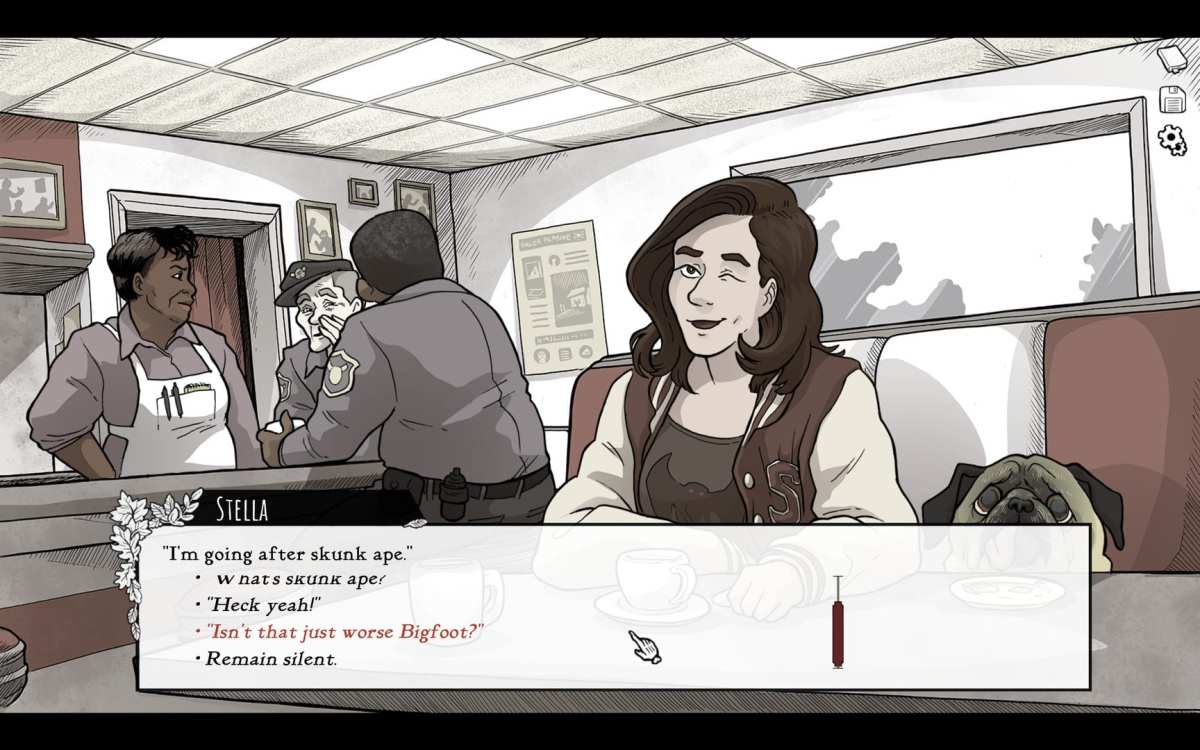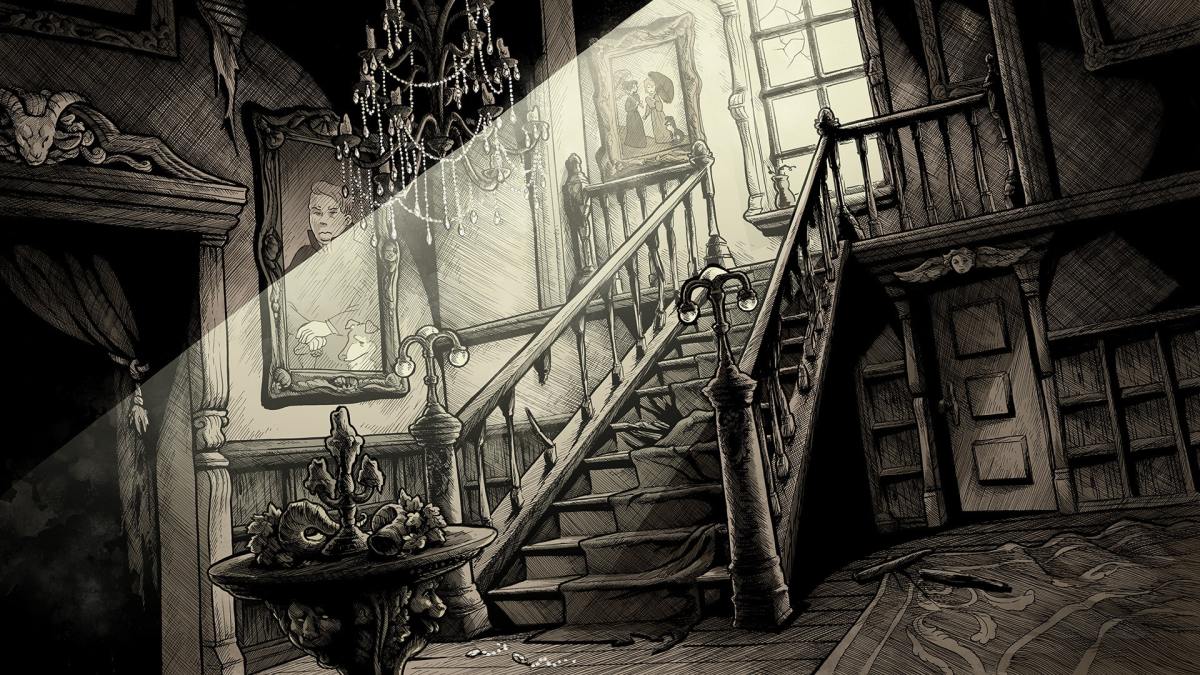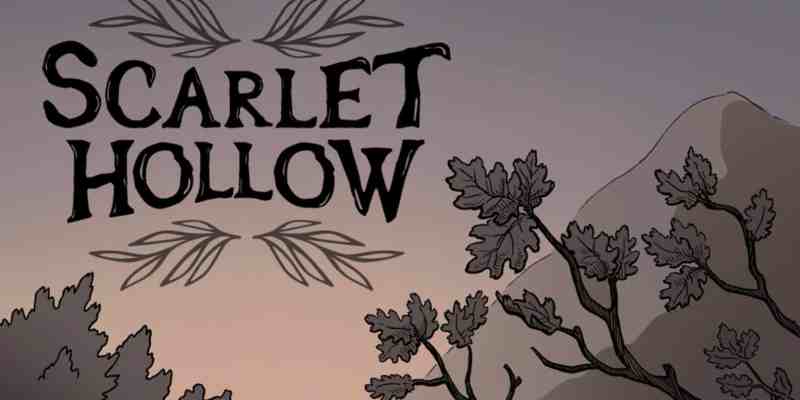Anyone who has lived in a small town for an extended period of time knows the pressure of family dynasties. Lacking the varied distractions of city life, entertainment in the country is often laser-focused on the gossip and dramas of the townsfolk. Before I even knew what kind of person I was, my family name was already heavy with expectations. I had to be a gifted athlete like my grandfather, or business-savvy like my parents, perhaps charming like my sister. Not bad things to expect from a person, but as a bookish, socially anxious mess, I dreaded every interaction with someone who had known me since I was “this big.”
Scarlet Hollow’s protagonist is similarly slid uncomfortably under the microscope as they travel to a country town for the funeral of their aunt. As they spend time in the ramshackle town, however, the protagonist realizes the annoying gossip of the citizens is nothing compared to the unspeakable horror that lurks in the heart of the woods.
Scarlet Hollow is a choice-driven visual novel, with the decisions the player makes having a cascading effect on the narrative. Most choices are related to relationship building: how well the protagonist gets along with their sullen cousin Tabitha, or if they enjoy cryptid hunting with the charming Stella. Two character traits chosen at the beginning of the game open up different story branches: a book-smart character can identify the architecture of the family’s rundown mansion, which would impress Tabitha, whereas a powerfully built person can use intimidation to get their way.
Decisions both big and small are affected by the character traits, from the ability to digest forgotten leftovers to sharpness of reflexes. I played through the game twice with different character builds, one smart and friendly, one strong and rude. While the main story beats remained the same, certain decisions resulted in a vastly different conclusion, to the point that I am very curious how the next chapter will handle the divergent choices. The rubber-banding of the main storyline is done well, with both my protagonists acting according to their nature, yet smoothly falling into each plot beat.
The creepiness of the world slowly builds over Scarlet Hollow‘s two-hour runtime for its free first episode. Everything feels slightly off from the beginning — a strange man on the bus reminiscing about pushing people into ponds, the disrepair of the family home, the stares of the townsfolk as you enter a cafe — but the creep into the otherworldly content is gradual. This slow focus on character-building adds to the sense of danger later: If the player asks the right questions, they can get to know Stella quite well, so later on the risk of losing her makes the stakes so much higher.
The inclusion of player choice does make pacing a story somewhat difficult. My first playthrough had a very dramatic conclusion, but the second attempt somewhat petered out. The ability to choose makes the tale far more interesting than a linear narrative, however, and the less exciting ending may have long-lasting repercussions for later episodes.

Scarlet Hollow‘s strong writing is backed by outstanding art and music. Artist Abby Howard is a cartoonist, and her extensive experience is evident throughout the piece. Sepia tones are punctured by the occasional splash of red, making the town appear old and rundown. The backgrounds and characters are all hand-drawn and highly expressive. Tabitha’s terrible fake smile makes me laugh out loud, and the supernatural creatures are genuinely creepy.
The sound design is minimal, but used with expert timing — an extremely old pug breathes with a slobbery death rattle, and the snap of a branch breaking in the forest resounds like a gunshot. A great deal of care has gone into accessibility options, too — the text can be changed into a dyslexic-friendly font, resized, or read aloud. I really appreciated being able to make the text larger, so I could just fall into the story rather than squint at my faraway screen.

Scarlet Hollow is a lovely slow burn of a horror tale that takes some unexpected turns. The uneasiness of small-town scrutiny blends so well into the supernatural creatures of the woods. I really liked the idea of combining RPG-style character traits with a narrative game the — Fallout skill check system taken to the extreme. If Scarlet Hollow has sparked your interest, developer Black Tabby Games is running a Kickstarter to fund the development of the rest of the episodes.
Next week we will be playing Nightmare Fishing Tournament 2020, a fishing game with a decidedly gory aesthetic. The game can be downloaded from itch.io. If you would like to share your thoughts, discussions will be happening in the Discord server.
